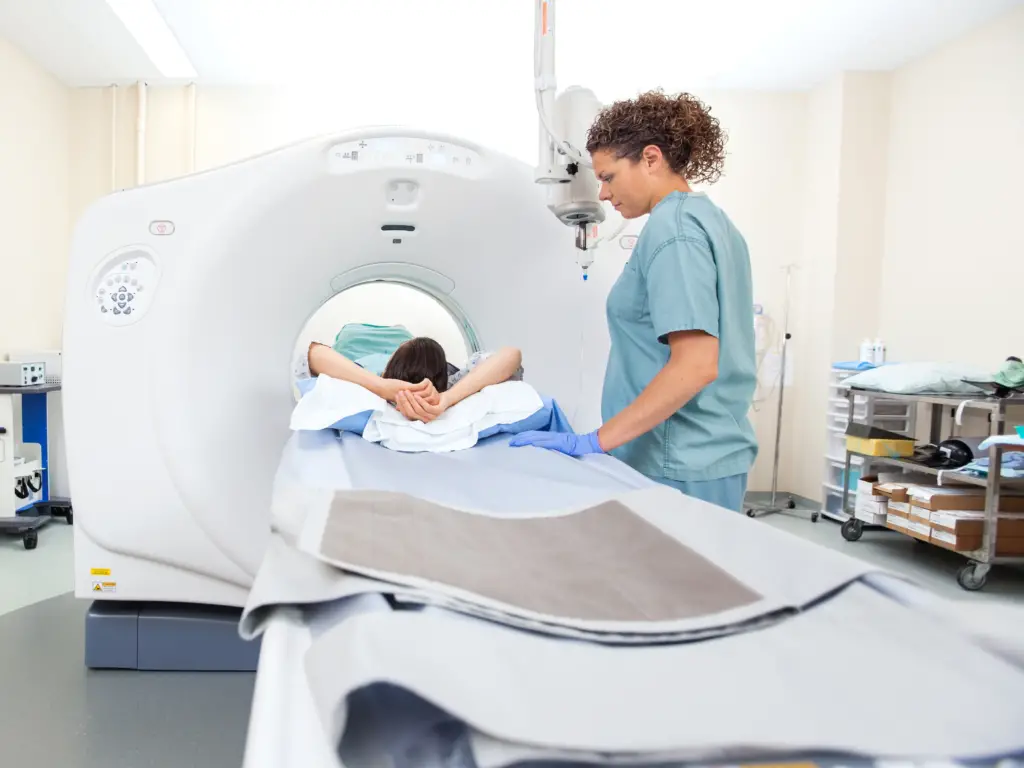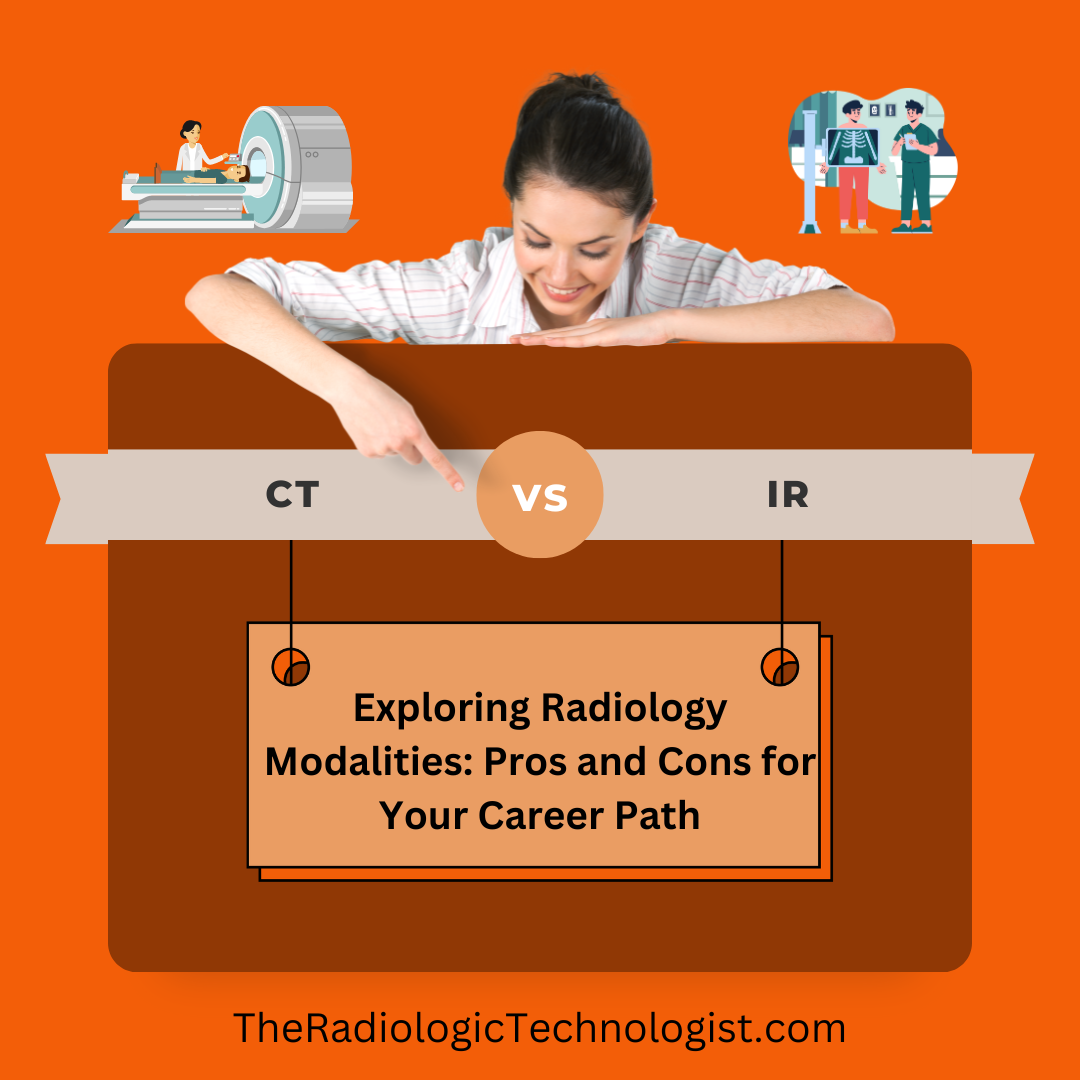As a second-year student in the radiology field, you may face choosing a specific modality to specialize in.
With advanced modalities such as CT (Computed Tomography) and IR (Interventional Radiology) gaining popularity, it’s essential to understand the pros and cons associated with each option.
This article will discuss these modalities’ key advantages and disadvantages and provide insights into other considerations. It will help you make an informed decision for your future career.
CT Modality:
Pros:
- Constant Demand: CT is known for its high demand because doctors often order scans for diagnostic purposes, making it a consistently busy field.
- Financial Stability: CT regarded as a lucrative modality, attracting administrators due to its potential for generating revenue.
- Bridge Between Bone and Soft Tissue: CT scans provide detailed cross-sectional images, making them valuable for visualizing bone and soft tissue structures.
Cons:
- Workload: The high demand for CT scans means technologists in this field may face a heavy workload, dealing with many patients.
- Overexposure to Radiation: Technologists working with CT equipment expose to radiation regularly. It necessitates strict adherence to safety protocols and proper protection.
IR Modality:
Pros:
- Collaborative Environment: IR offers the opportunity to work closely with physicians, facilitating a collaborative approach to patient care and providing valuable learning experiences.
- Broad Skill Set: Interventional radiologists often perform various procedures, such as biopsies, drain insertions, and minimally invasive interventions, expanding their skill set.
Cons:
- On-Call Responsibilities: IR technologists typically have significant on-call duties, which may require them to be available outside regular working hours.
- Increased Radiation Exposure: Given the nature of interventional procedures, technologists in this field may face higher radiation exposure levels than other modalities.
Other Considerations:
- Independence vs. Teamwork: Consider whether you prefer working independently or as a team. CT may offer more autonomy, while IR involves closer collaboration with physicians.
- Work-Life Balance: Evaluate your tolerance for being on call and its impact on your personal life and commitments.
- Occupational Exposure: If you have a family history of cancer or concerns about occupational radiation exposure, assessing the risks associated with each modality may be wise.

Conclusion:
Choosing the right radiology modality is a critical decision that will shape your career path. While CT and IR offer distinct advantages and disadvantages, it’s essential to consider your personal preferences, career goals, and long-term aspirations.
Assess the workload, radiation exposure, collaboration opportunities, and work-life balance each modality offers.
Finally, consult with experienced professionals, reach out to industry organizations, and gather as much information as possible. It will help to make an informed choice that aligns with your interests and future aspirations in radiology.


